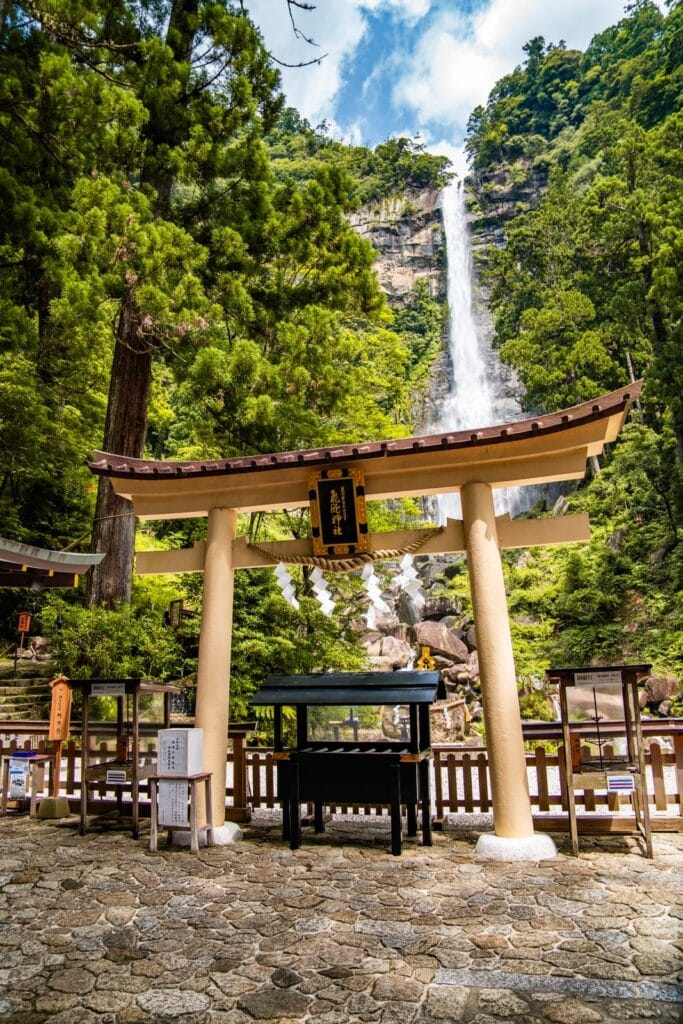I’ve explored the Chugoku region’s most spectacular hiking trails, and these five gems will take your breath away.
Start with Mount Daisen’s summit trail, where ancient beech forests lead to stunning panoramic views.
Follow the sacred Kumano Kodo pilgrimage routes to discover thousand-year-old shrines, or wander through Akiyoshidai’s otherworldly limestone landscape. For rural charm, tackle Mount Hiruzen’s triple peaks, where traditional cuisine awaits after your climb.
Finally, immerse yourself in Sanbe’s mythological paths, where volcanic summits and soothing hot springs create the perfect hiking adventure.
Each trail holds countless secrets waiting to be uncovered.
1) Mount Daisen’s Majestic Summit Trail
Rising 1,729 meters above sea level, Mount Daisen stands as the Chugoku region’s highest peak, offering hikers a challenging 4-kilometer trail to its summit.
I’ll tell you right now – you’re in for a strenuous adventure that’ll take 3-6 hours round trip, but the views are worth every step.
You’ll start your journey at the historic Daisenji Temple, a 1,300-year-old spiritual landmark that sets the tone for your ascent.
As you climb higher, you’ll pass through enchanting beech forests and the sacred Ogamiyama-jinja Shrine before reaching the wooden boardwalks near the summit.
While Kengamine Peak is off-limits, you can still bask in breathtaking views of the Sea of Japan from Misen Peak at 1,709 meters.
For those seeking ultimate luxury experiences, private guided hikes with traditional Japanese picnics can be arranged through exclusive travel services.
The trail offers a stark contrast to Shikoku’s pilgrimage routes, providing a more vertical and mountainous hiking experience.
2) Sacred Steps of Kumano Kodo

Along the mystical paths of the Kii Peninsula lies the Kumano Kodo, a network of ancient pilgrimage routes that’ve carried spiritual seekers for over a thousand years.
I can’t help but feel humbled knowing I’m walking the same paths that emperors and samurai once traversed in their quest for enlightenment.
You’ll find seven distinct trails to choose from, but I’d recommend starting with the Nakahechi Route if you’re new to the pilgrimage.
It’ll lead you to the magnificent Kumano Sanzan – three grand shrines that form the spiritual heart of the region.
Don’t miss the stunning Kumano Nachi Taisha, where a three-storey vermillion temple stands sentinel beside Japan’s tallest waterfall.
The region showcases traditional Japanese architecture through its carefully preserved shrines and temples.
While exploring the sacred paths, you can make a detour to visit the Mount Fuji area in neighboring Chubu for breathtaking views.
For your convenience, there’s a handy luggage shuttle service, so you can focus on your spiritual journey rather than lugging heavy bags.
3) Limestone Wonders at Akiyoshidai
Deep beneath the surface of Yamaguchi Prefecture lies one of Japan’s most extraordinary geological wonders – Akiyoshidai.
You’ll be walking atop what was once a thriving coral reef from 300 million years ago, transformed by time into a mesmerizing limestone plateau that stretches as far as the eye can see.
After your hike, you can sample some of the local Chugoku cuisine at nearby restaurants that showcase the region’s specialties.
I can’t recommend enough exploring both above and below ground here.
While you’re trekking across the 130-square-kilometer plateau, you’ll encounter countless limestone pinnacles and mysterious sinkholes.
Don’t miss venturing into Akiyoshido Cave, where I’ve spent hours marveling at the underground waterfalls and cobalt blue streams.
If you’re visiting in winter, you’re in for a special treat – the entire karst landscape transforms into a white wonderland that’ll take your breath away.
Like Tohoku’s natural wonders, this remarkable landscape offers incredible photo opportunities throughout all four seasons.
4) Mount Hiruzen Rural Adventure
Three rugged peaks pierce the sky at Mount Hiruzen, where I’ve discovered an adventure playground that blends rural charm with outdoor thrills.
You’ll find trails weaving through the highlands at over 500 meters, offering spectacular vistas across Daisen Oki National Park. Much like Kyushu’s cuisine, the local food scene offers distinctive regional flavors unique to this part of Japan.
I recommend timing your visit to experience the area’s seasonal transformations. In warmer months, you can trek the mountain paths and sample Europe-rivaling cheeses at Latte Bambino, while winter transforms the landscape into a snow-covered wonderland perfect for snowshoeing.
Don’t miss the chance to refuel at local barbecue spots serving Genghis Khan mutton, and if you’re like me, you’ll want to end your day soaking in Sunayu Onsen’s therapeutic waters while watching the sun set behind Hiruzen’s majestic peaks.
The region offers diverse hiking options throughout all four seasons, making it one of Japan’s most versatile outdoor destinations.
6) Sanbe’s Ancient Mountain Paths
Moving east from Hiruzen’s peaks, I’ve found an even more enchanting volcanic landscape at Mount Sanbe, where four ancient summits tell a story steeped in Japanese mythology.
You’ll discover six distinct trails that wind through this sacred terrain, each offering its own rewards and challenges.
For your first visit, I’d recommend the beginner-friendly Himenogaike route, though ambitious hikers might prefer tackling the northern approach from 青少年の家, which gets you to Osanbe’s 1,126-meter summit in about two hours.
As you traverse the beech forests and grassy slopes, you’re actually walking in the footsteps of ancient gods – the mountain’s formation is attributed to Yatsukamizuomizunu in local legends.
Just like the Northern Alps region of Japan, the area experiences heavy snowfall in winter, making spring through fall the ideal hiking seasons.
After your climb, I suggest soaking your tired muscles in the mineral-rich waters of Kamenoyu or Tsurunoyu hot springs.
Careful budget planning will help you make the most of your hiking adventure while exploring Japan’s natural wonders.




